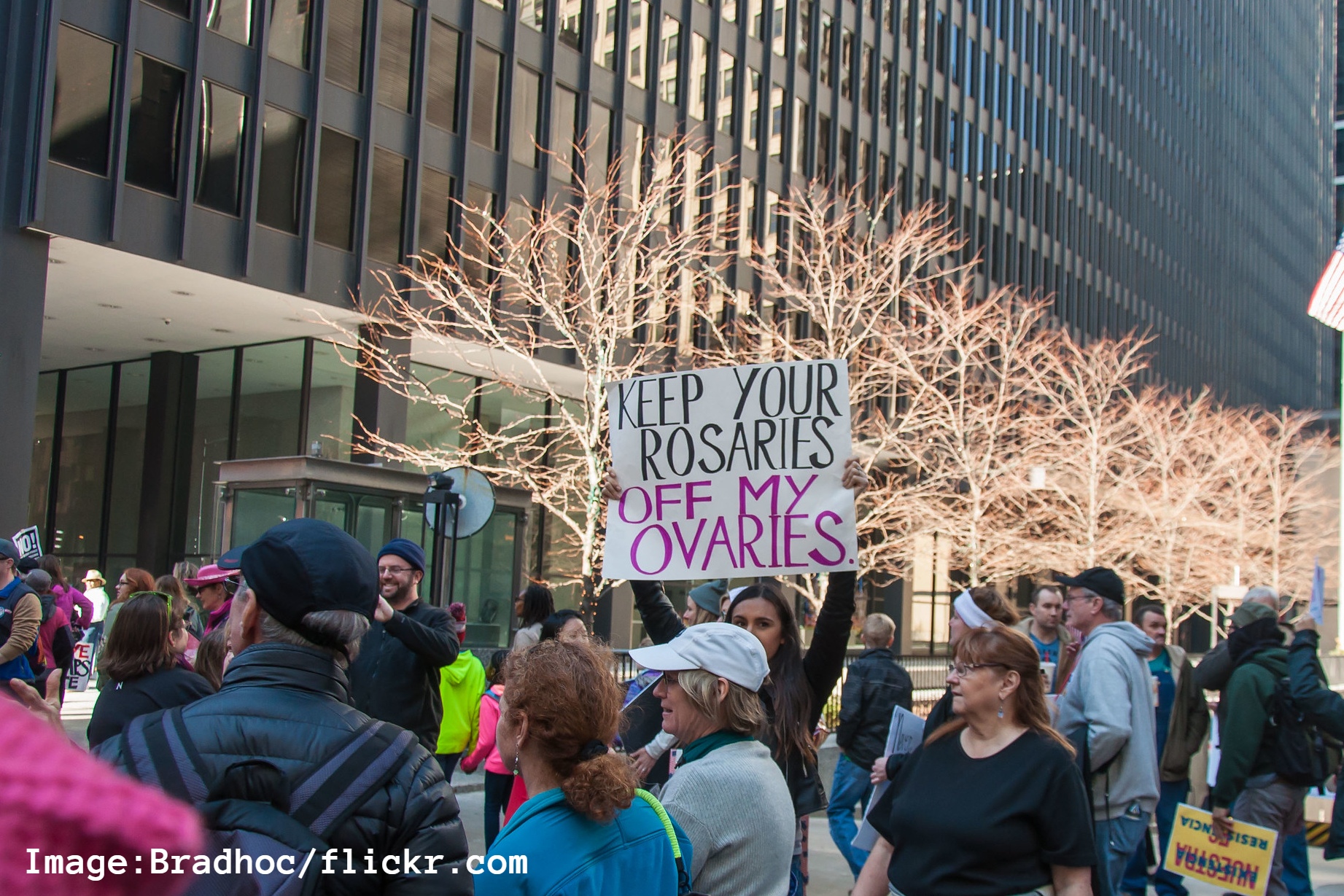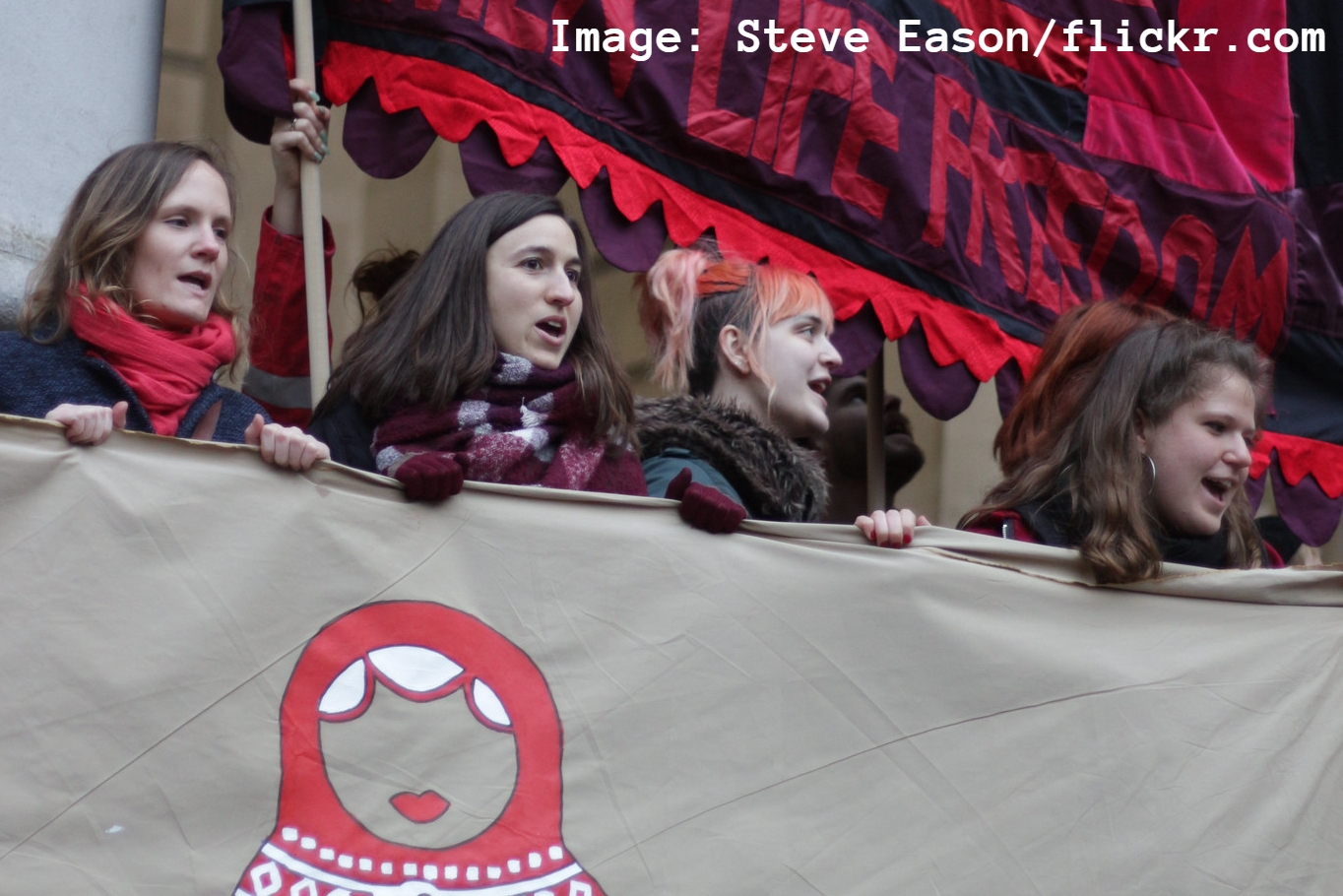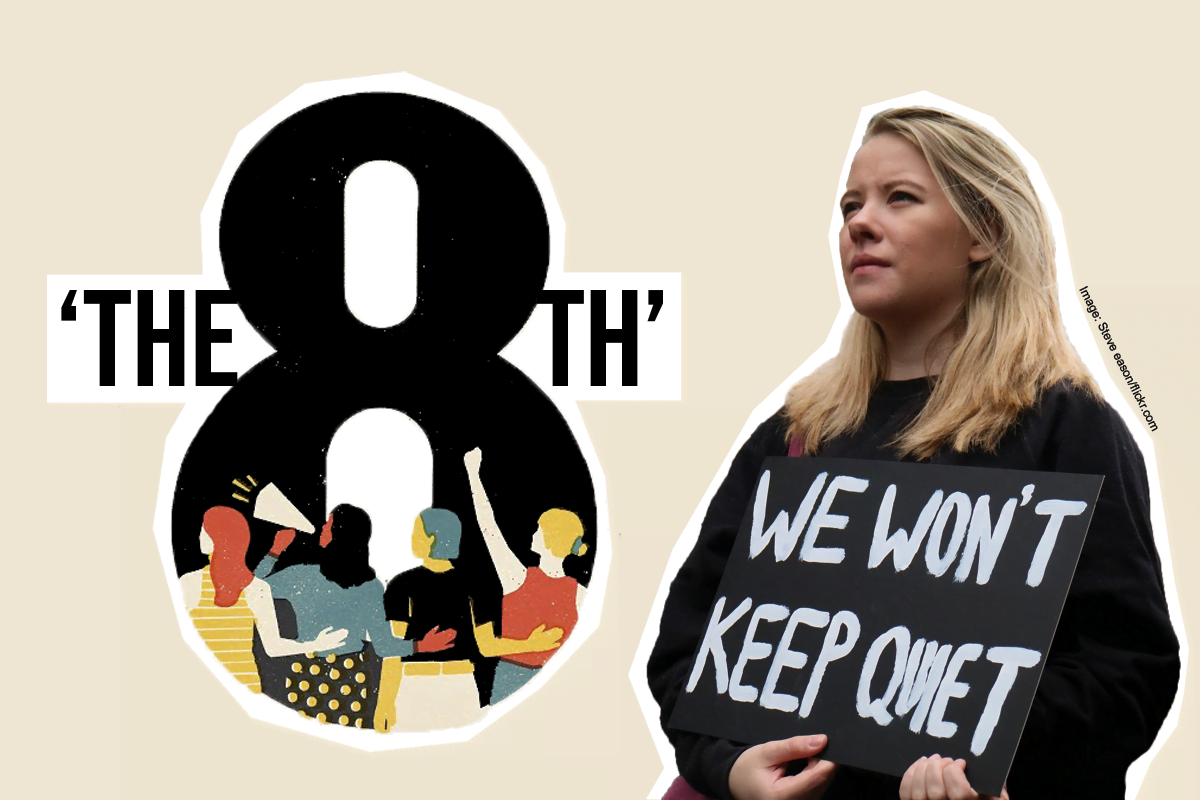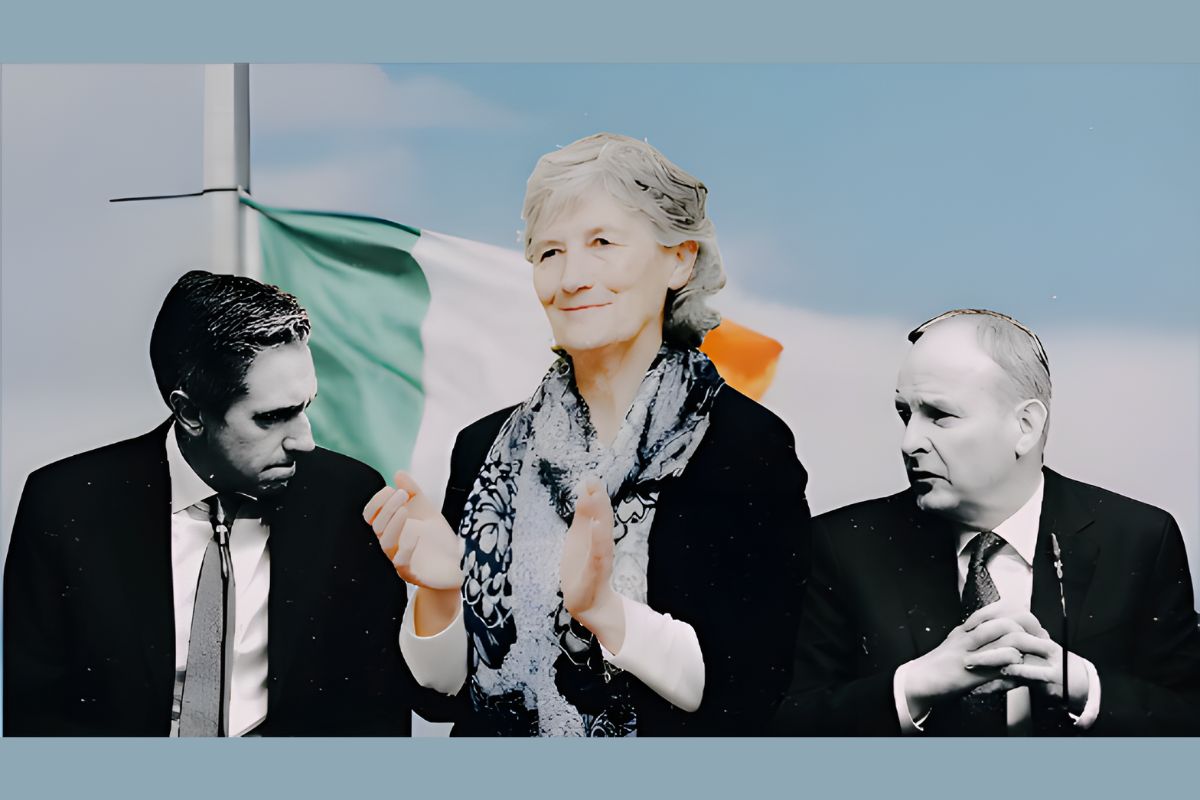The 2018 referendum over the 8th amendment in Ireland was a turning point in the struggle for women’s liberation, delivering a huge blow against the Church and the establishment. Caoimhe Lyons reviews a new documentary following this struggle.
A new documentary The 8th has hit cinema and TV screens, detailing how the 8th amendment – the subsection of the Irish constitution that placed a pregnant person’s life on a par with the life of an unborn embryo or fetus – was removed from Ireland’s constitution.
The amendment was added to the constitution in 1983 by referendum, by a margin of two to one. 35 years later, in a vote held on 25 May 2018, it was removed by the same margin – a seismic shift in Irish society in a single generation.
The film follows the story of the activists involved in the fight to repeal the amendment, focussing on Ailbhe Smith and – to a lesser extent – nail artist and self-identified ‘glitter activist’ Andrea Horan.
The documentary certainly does a wonderful and emotive job in capturing the stories of those involved with campaigning against the 8th. What the documentary perhaps missed was the real story of the amendment itself.
Horrific
 A number of women’s voices ring throughout the documentary, detailing horrific stories that demonstrate the brutality and injustice of the 8th amendment. While presenting all narratives present during the campaign, the film never strays from the cases of those materially impacted.
A number of women’s voices ring throughout the documentary, detailing horrific stories that demonstrate the brutality and injustice of the 8th amendment. While presenting all narratives present during the campaign, the film never strays from the cases of those materially impacted.
One woman describes a night where she was bleeding on her kitchen floor, and was stepped over by her partner on the way to the fridge. He turned the kitchen light off upon his exit, leaving this woman – like so many others – literally suffering in the dark.
The documentary also told the infamous and harrowing story of Savita Halappanavar, whose tragic story shook Ireland, galvanising support for repeal among the public.
Denied access to an emergency abortion, Savita was allowed to die unnecessarily on a hospital bed. The documentary includes an emotional interview with her husband, showing the scars that this barbaric amendment continues to leave on so many lives.
Role of the church
 From the formation of the Irish Free State a century ago, the Catholic Church has been all but an extension of the state in Ireland.
From the formation of the Irish Free State a century ago, the Catholic Church has been all but an extension of the state in Ireland.
During the documentary, a visit is paid to the site of one of the mother-and-baby homes in Tuam, County Galway. The heart wrenching truth of 800 infant bodies – infants left in the protection of the Church – is laid bare.
The story of such slave houses, where so-called ‘fallen women’ and young children were abused and left to rot, exposes the hypocrisy of an institution that claims it is protecting life. It was only in the 1990s that the horror of these places was brought to light, forming a massive crack in the Church’s hold over peoples minds.
The film focuses on the key year of 2018, the year of the referendum, capturing the mood that existed at mass demonstrations, where thousands of people raised slogans such as, ‘get your rosaries off my ovaries’ – a complete rejection of the Church and its abuses.
However, today the Catholic Church retains much of its power in Irish society – running schools and hospitals. It retains its ill-gotten wealth, and continues to form a component part of the Irish ruling class.
Because of the Church’s ongoing hold over education, sex education is simply not addressed in many schools to this day. Perhaps for stylistic reasons, this point is downplayed in the documentary. But these omissions meant that a certain dimension – in terms of both context and historical narrative – is missing.
A fact also overlooked in the documentary is the complicity of Ireland’s so-called ‘liberal’ politicians.
The repeal of the 8th was fought and won by ordinary working-class women and men. During the referendum campaign, by contrast, the liberal politicians played an utterly spineless role.
Micheál Martin offered his hollow congratulations, while Leo Varadkar, chameleon-like, changed his tune as the likely outcome of the referendum became clear.
Seismic shift
 Ireland has undergone huge changes in the past few decades, developing into a more urban society with a young, educated working class – one that is no longer willing to live under the Church’s domination. A seismic shift has taken place at the foundations of Irish society.
Ireland has undergone huge changes in the past few decades, developing into a more urban society with a young, educated working class – one that is no longer willing to live under the Church’s domination. A seismic shift has taken place at the foundations of Irish society.
In the context of a deepening capitalist crisis in Ireland and internationally, working people, and above all working-class women, are beginning to awaken to political activity.
In this sense, the repeal earthquake is part of a global awakening of the oppressed – occurring at the same time as mighty struggles for abortion rights have erupted in Poland and much of Latin America.
Yet the focus of the film, on murals and slogans, and intermittent montages of newspaper headlines, leaves one with the impression that the referendum was fundamentally decided by language, and by how each side framed its arguments.
In other words, all the focus is on the ‘narratives’ of the campaign, and not on the mass movement that was the real motor force for change.
Struggle for liberation
 The final chapter of this struggle is yet to be written.
The final chapter of this struggle is yet to be written.
Many women today still cannot access abortion services due to the suffocating influence and control of the Church. Abortion services are provided by just one-in-nine GPs in Ireland, and in just over half of the country’s maternity hospitals, with women from marginalised and rural backgrounds finding it the most difficult to access services.
Years of austerity and crisis have left healthcare unaccessible for many working-class people. Waiting lists for even the most basic of procedures extend for years; and hospital beds often spill out into the halls.
The political establishment at Leinster House, who were hand in glove with the church for decades, see the issue as settled – but it is not. The fight to achieve full liberation for women can never be truly and fully realised without the overthrow of capitalism.






